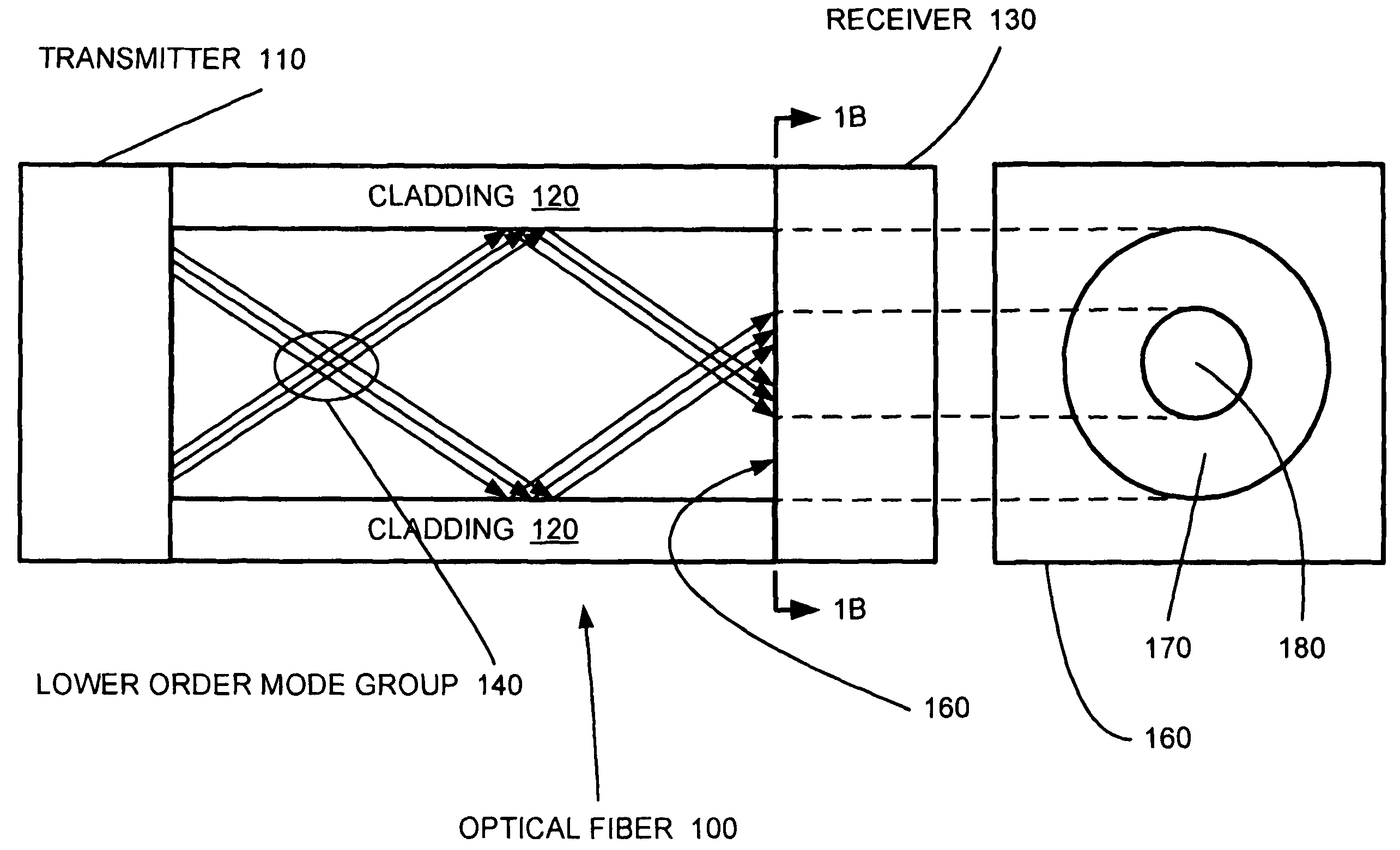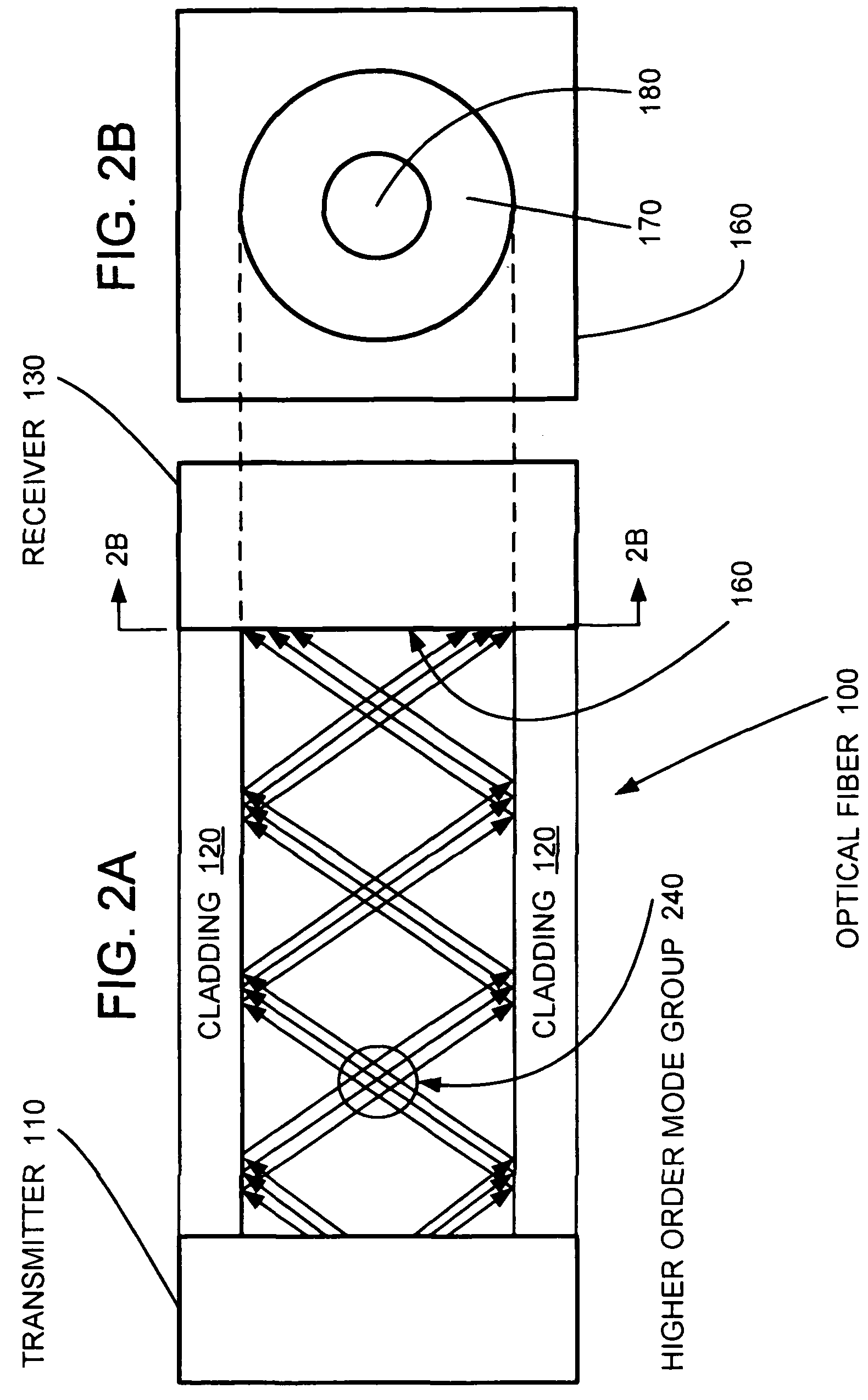Photodiode with fiber mode dispersion compensation
a fiber mode and photodiode technology, applied in the field of fabrication of photodiodes, can solve the problems of intersymbol interference, reduce the maximum data transmission rate, reduce the total transmission capacity of fiber, etc., and achieve the effect of reducing the effect of modal dispersion, less responsiveness, and reducing the respons
- Summary
- Abstract
- Description
- Claims
- Application Information
AI Technical Summary
Benefits of technology
Problems solved by technology
Method used
Image
Examples
Embodiment Construction
[0025]In an optical communication systems, modal dispersion limits both the bandwidth and the travel distance of the communications system. An optical signal from a laser is launched into a fiber and propagates along the fiber as multiple modes, each of which travels a different path through the fiber. The different mode velocities cause a pulse formed from more than one mode to spread out as it propagates. Each of the modes can have different arrival times at the end of the fiber, resulting in modal dispersion.
[0026]Modal dispersion causes each digital pulse of the optical signal launched through a fiber to spread as a function of the length of the fiber. Uncompensated modal dispersion limits the transmission bit rate of a digital communications system because the resultant distortion of the received signal causes high bit rate pulses to merge causing intersymbol interference. Pulses that overlap cannot be reliably distinguished.
[0027]Embodiments illustrated herein include photodio...
PUM
 Login to View More
Login to View More Abstract
Description
Claims
Application Information
 Login to View More
Login to View More - R&D
- Intellectual Property
- Life Sciences
- Materials
- Tech Scout
- Unparalleled Data Quality
- Higher Quality Content
- 60% Fewer Hallucinations
Browse by: Latest US Patents, China's latest patents, Technical Efficacy Thesaurus, Application Domain, Technology Topic, Popular Technical Reports.
© 2025 PatSnap. All rights reserved.Legal|Privacy policy|Modern Slavery Act Transparency Statement|Sitemap|About US| Contact US: help@patsnap.com



